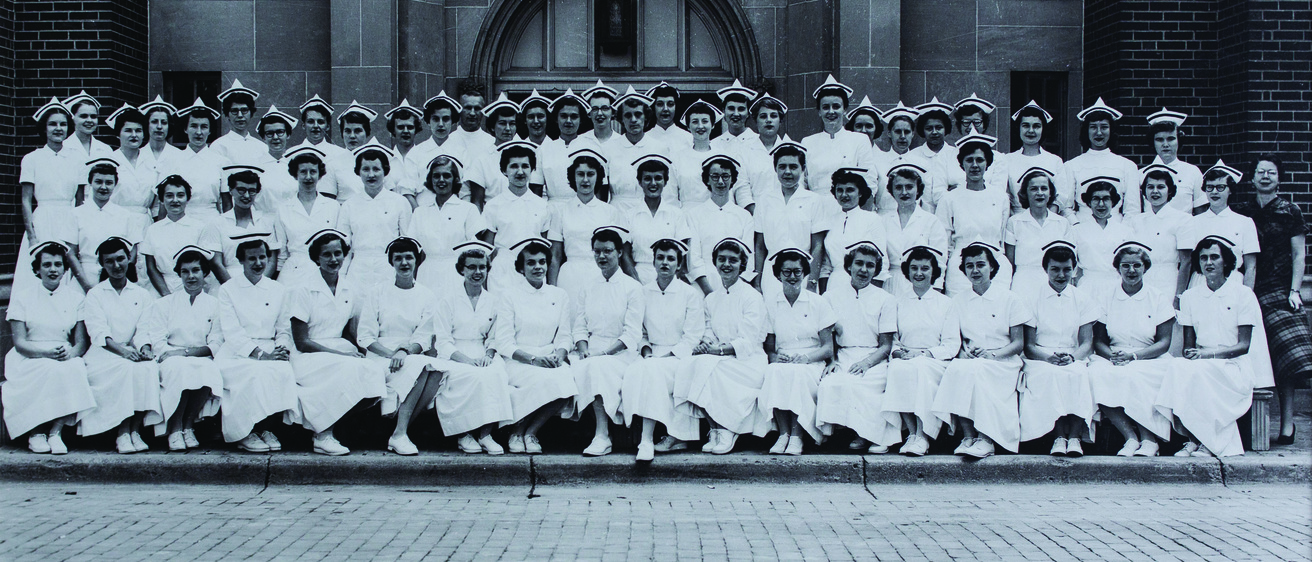Main navigation
In early 1949, the Board of Education approved the State University of Iowa proposal for the School of Nursing to become an independent, degree-granting college.
Myrtle E. Kitchell, a nurse working on her doctorate in education from the University of Minnesota, was approved as dean-elect in May 1949. ‘Kitch,’ as she was known around the college, immediately began to work on organizing the new college. Promising to provide “a broad education for professional nursing,” emphasis was placed on the baccalaureate program and the combination of liberal arts and professional instruction. Graduates of the College of Nursing would receive a Bachelor of Science in Nursing (BSN) and a Certificate of Graduate Nurse (GN).
On Dec. 3, 1949, the College of Nursing was formally inaugurated as the tenth autonomous college of the State University of Iowa.
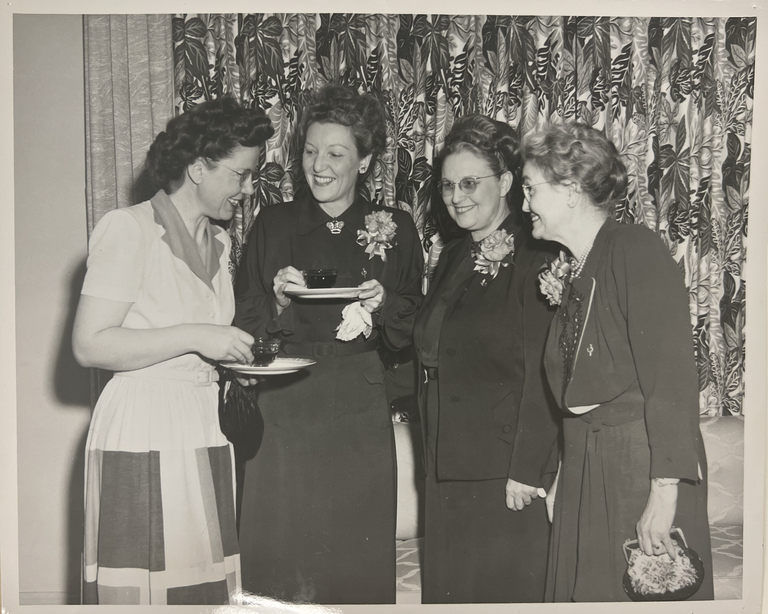
The 1950s and early 60s were times of growth in professional nursing and nursing education. Federal and state investments in higher education, medical research, and health care expanded, as did the prevalence of private health insurance and the presence and prestige of hospitals. Many colleges and universities created baccalaureate programs in nursing, some also established master and doctoral-level programs, and accreditation was increasingly important.
For the college, it was a time of evolution as it strove to define itself within the university and nurture new programs.
Undergraduate programs
Final revisions of the BSN curriculum were concluded in 1952. The first five semesters were focused on liberal arts and sciences, followed by six semesters of clinical courses. The curriculum was accredited by the National League for Nursing (NLN) later that year.
In 1951, the college introduced a second baccalaureate program, known as the “general program” for nurses already holding a GN certificate who wished to obtain a bachelor’s degree. Not long after, they stopped accepting new students into the GN program, and the final class of graduate nursing students completed their studies in 1956. As the GN program wound down, the college added a practical nursing program that served as a laboratory for development of curriculum and teaching strategies while also developing well-educated bedside nurses.
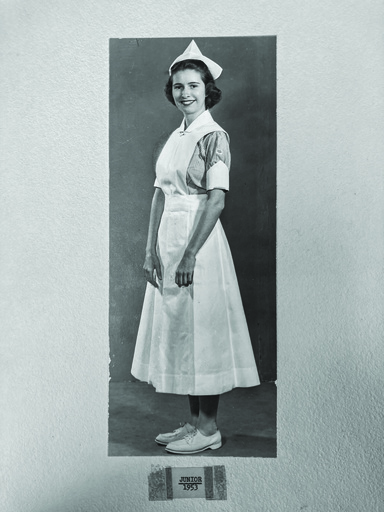
In the 1960s, the national trend was to integrate the BSN programs for new nursing students and those for nurses already holding diplomas into one baccalaureate track. The college followed suit, and in 1965, faculty approved converting to a single baccalaureate curriculum and granting admissions with advanced standing to registered nurses.
When the nursing program began, students were educated through practical work at the bedside. As late as the 1930s, the final year of the three-year program featured no classroom hours, only “senior ward practice”. Required work hours were slowly reduced over time as nursing education shifted away from the training school model. In 1951, Dean Kitchell estimated that in less than a year, nursing students would provide more than 263,000 hours of hospital service. A significant effort was made during the 1950s to reduce students’ work obligation in the hospital. Although required student work hours were nearing a record low of 28 per week, in 1955 faculty proposed a four-year, (eight-semester) curriculum that did not require hospital service.
The change to the four-year BSN curriculum was approved by Board of Regents in 1961.

Loosening of Restrictions
Throughout the previous decades, nursing students had not only moved through classes together, but were required to live together as well. Their lives were strictly controlled, from morning uniform inspection (to pass inspection, each student had to lift her skirt slightly to show that she had on a petticoat), to timing of meals (eating outside of stated hours was not allowed), to their hair length (those with “unprofessional” short hair, were required to buy a “switch” to look like they had long hair in an updo).
Dean Kitchell wanted the new BSN students to be integrated into university student life and see themselves as part of the university community. She encouraged participation in university activities and allowed freshman and sophomore students to live in women’s dorms other than Westlawn, despite some grumblings from senior students about the lack of standards and professional dignity evidenced by bobby sox, tennis shoes, and short skirts.
Graduate programs
During her tenure, Dean Kitchell was adamant about the necessity of credentials to elevate nurses’ professional status and the importance of graduate education. She was instrumental in securing a Kellogg Foundation grant that led to the college welcoming the first class of Master of Science in Nursing Service Administration students in fall 1951. Thirteen students completed the program during the grant’s five-year term.
After the grant expired, the college’s graduate curriculum committee began working on a program aimed at increasing competence in clinical nursing. In fall 1958, a four-semester Master of Arts curriculum in medical-surgical and psychiatric nursing was offered and nine students enrolled. Three years later, the master’s program was reimagined as a vehicle to prepare nurses for positions as teachers and supervisors.
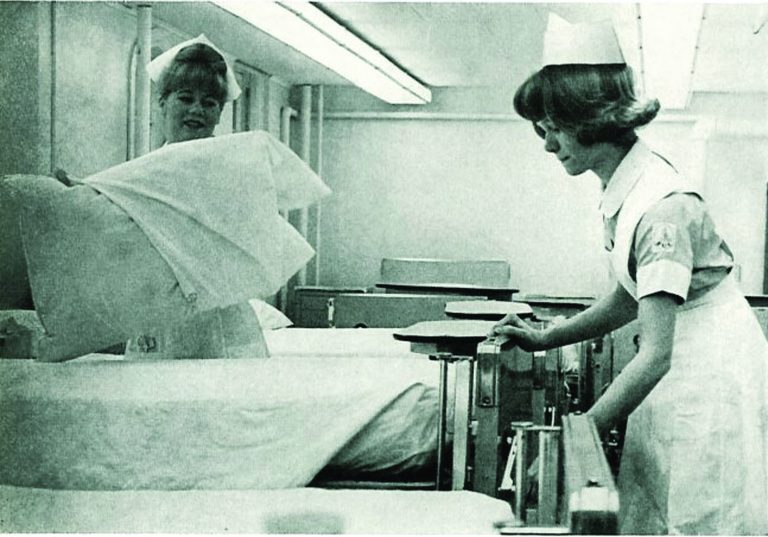
Dean Kitchell stepped down as dean in spring 1957. Her successor, Mary Kelly Mullane, was appointed in 1959 and resigned in summer 1962 for another opportunity. Finding replacements for both Kitchell and Mullane took time, primarily due to the lack of PhD qualified candidates. The college welcomed Laura Dustan, a public health nursing professor who came to the college after working at the NLN’s Board of Review for Accrediting of Baccalaureate Programs, as the new dean in fall of 1964.
Nationally, the 1960s and 70s brought federal funding for nurse practitioner programs, expansion of graduate-level programs, and the 1973 establishment of the American Academy of Nursing to recognize contributions made by nursing leaders. Changes in Iowa law in the 1970s set nursing apart from medicine and gave nurses a degree of professional autonomy.
These decades also brought a marked expansion of BSN and associate degree programs, and a decline in diploma programs. The value of a BSN was becoming broadly recognized, and BSN nurses held a large portion of supervisory and clinical specialty positions.
Although discussions about the importance of a building dedicated for the College of Nursing began as early as the 1940s, serious planning began in the early 1960s under Dean Mullane and continued under Dean Dustan. The federal Nurse Training Act would fund two-thirds of the cost of a new building, making new construction more cost effective than remodeling Westlawn. Disagreements about funding priorities delayed the start of the project, but construction finally began on Oct. 1, 1969. The new College of Nursing building was completed two years later and formally dedicated on Dec. 4, 1971.

Increasing BSN Accessibility
In a 1968 grant proposal, Dean Dustan noted that non-baccalaureate degree programs were all terminal, and graduates who later sought a BSN had to backtrack to pick up the necessary foundational courses. Dustan hoped to develop curriculums at two- and four- year community institutions that allowed for seamless transfer to a baccalaureate program. The grant was approved, and the first cohort of seven articulation students began at the college in the summer of 1970, with an additional 20 beginning in 1971.
In 1990, the articulation plan was taken up by the Iowa Board of Nursing and became the Iowa Articulation Plan for Nursing Education. Registered nurses could now complete their BSN in one year of full-time, on-campus classes or at one of three satellite locations where the university rented space for classrooms and the professors taught from Iowa City via the state’s fiber optic network.
“When I was in school, there was no public transport for getting to clinicals across the river, so we stood on the corner every morning hitchhiking, with our nursing caps in a little plastic bag. We stood on the corners and groups of people going to the hospitals would just pick up these three or four nursing students every morning. It was a nightmare when you think about it, but we just all did it and it was the norm.”
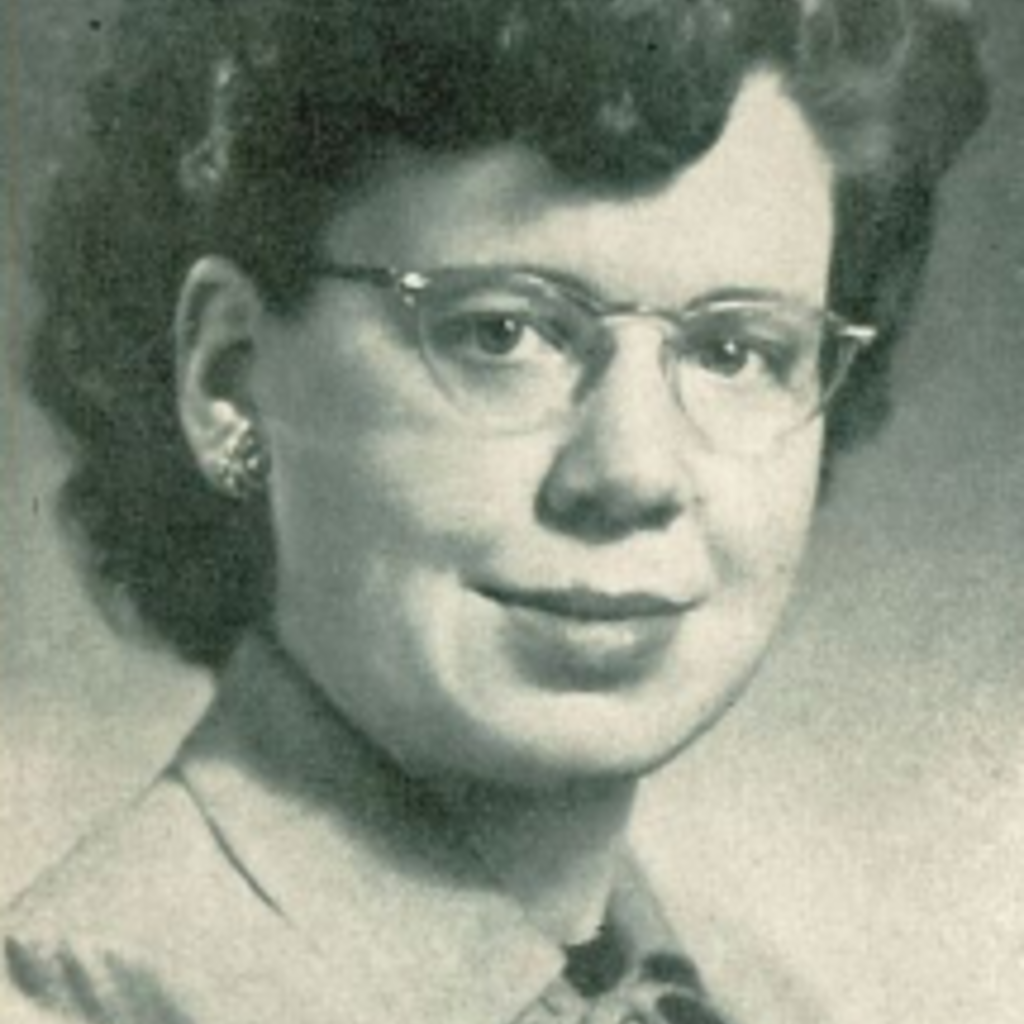
1949
Myrtle “Kitch” Kitchell (Aydelotte), PhD, RN is installed as the first dean, and the college is formally inaugurated as the tenth autonomous college at the SUI. Graduates of the College of Nursing will receive a Bachelor of Science in Nursing (BSN) and a Certificate of Graduate Nurse (GN).
1951
- First master’s program, funded for five years by a grant from the Kellogg Foundation, begins. in Nursing Service Administration.
- “General program” leading to a BSN is established for nurses already holding a GN certificate.
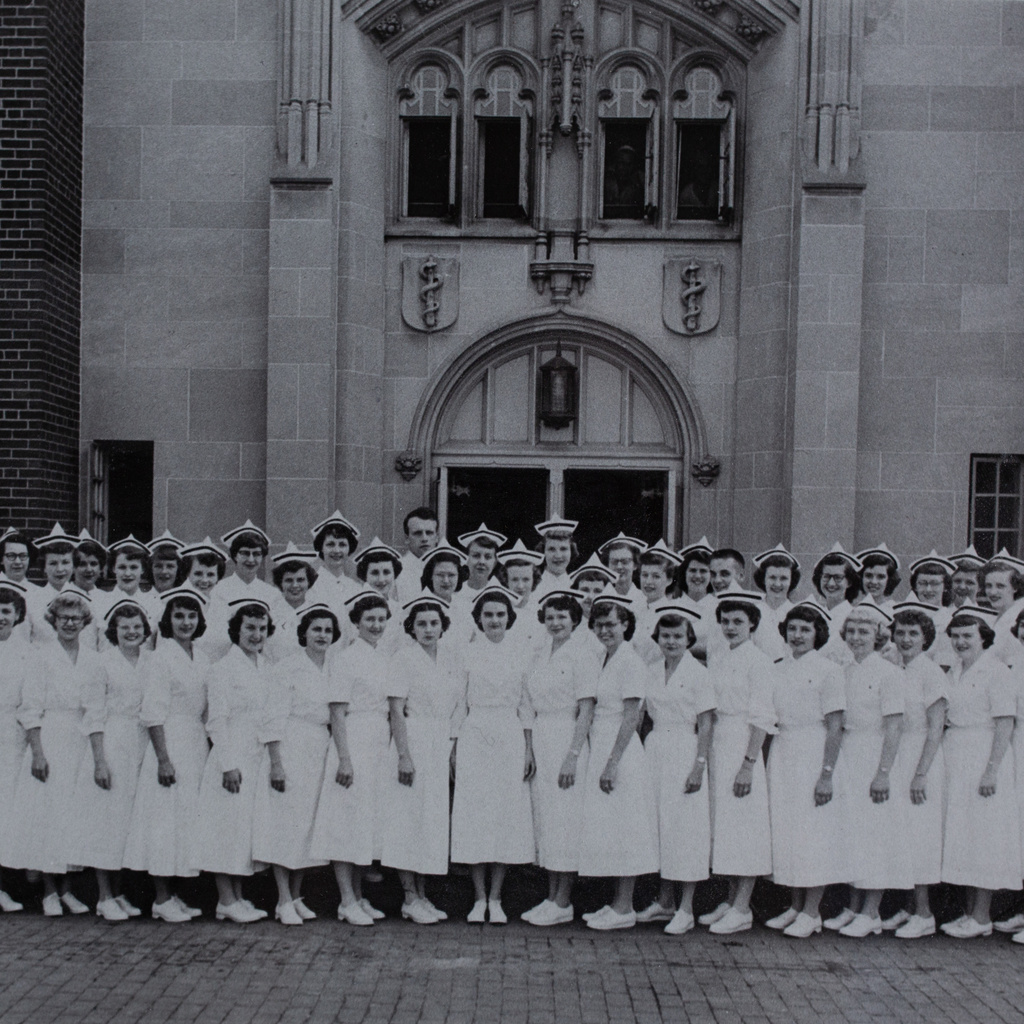
1953
The first class of 32 students receive their BSNs from the College of Nursing.
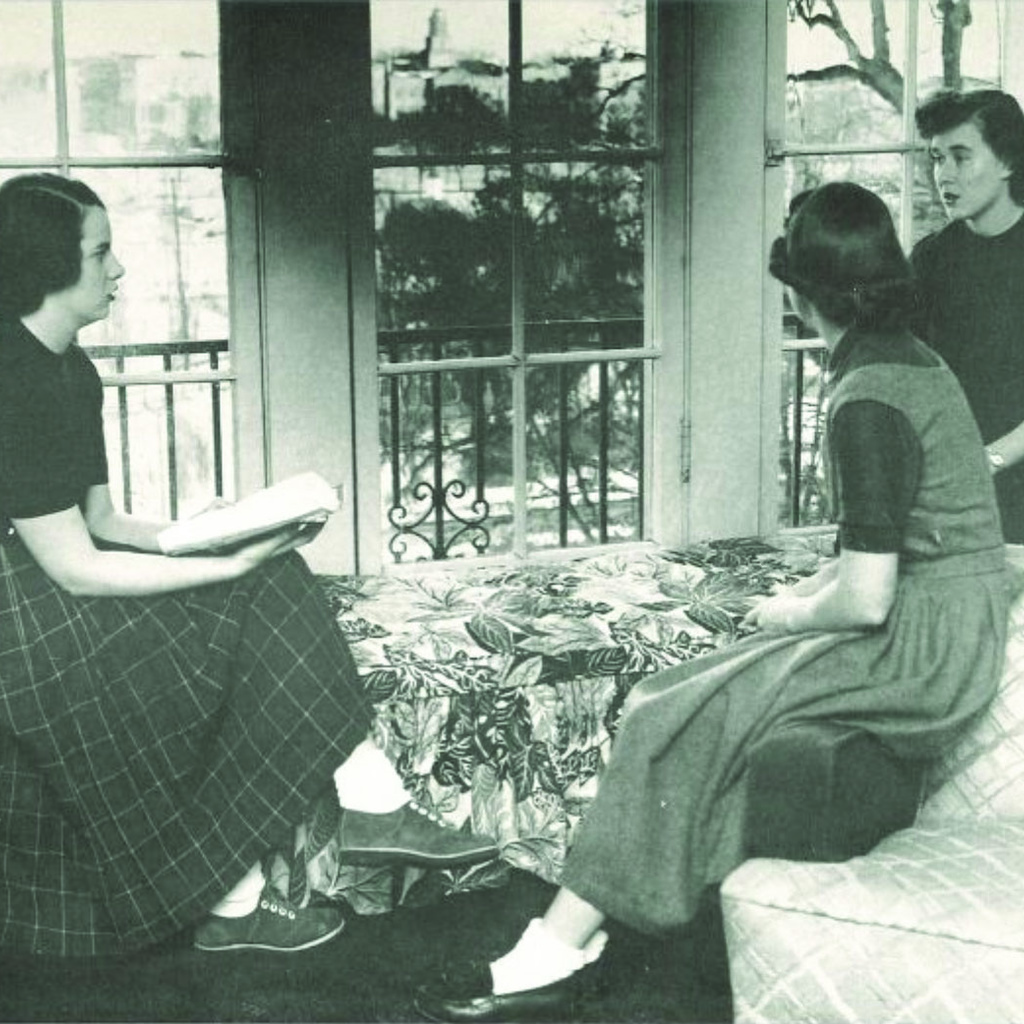
1954
Only junior and senior nursing students are required to live in Westlawn.
1956
- The first major research activity by a member of the College of Nursing faculty is funded. Dean Kitchell is the co-principal investigator of the three-year project studying nursing activity and patient welfare.
- Final class of GN students complete their studies and the program ends.
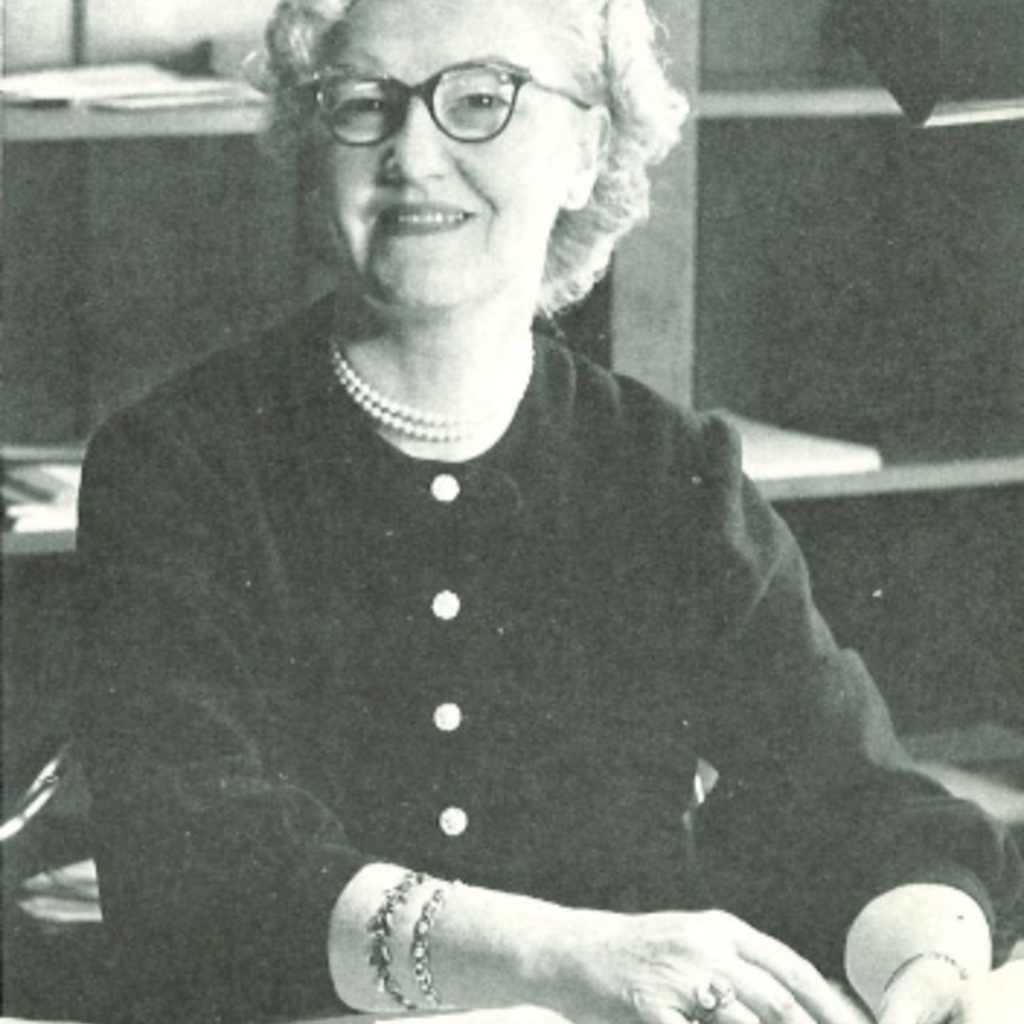
1959
Mary Kelley Mullane, PhD, RN, becomes dean of the college.
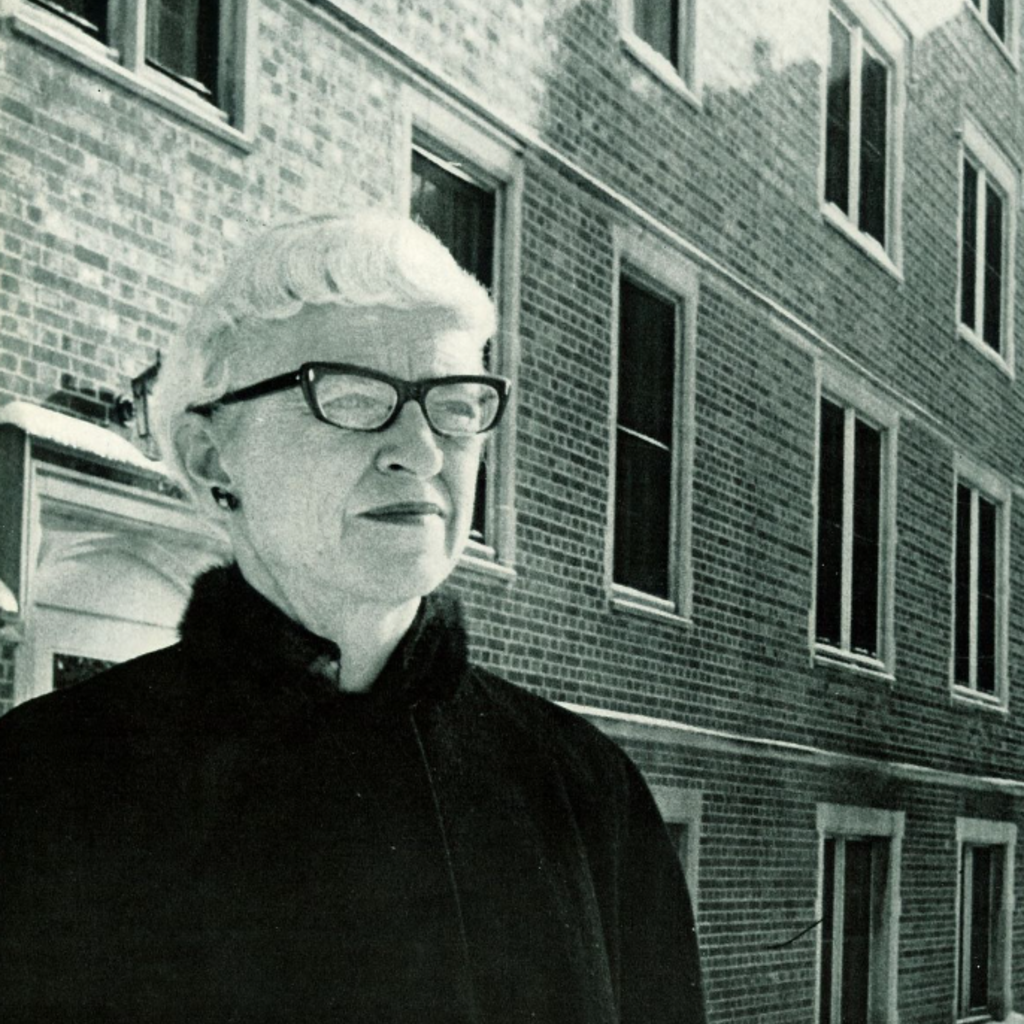
1964
Laura C. Dustan, EdD, RN, becomes dean of the college.
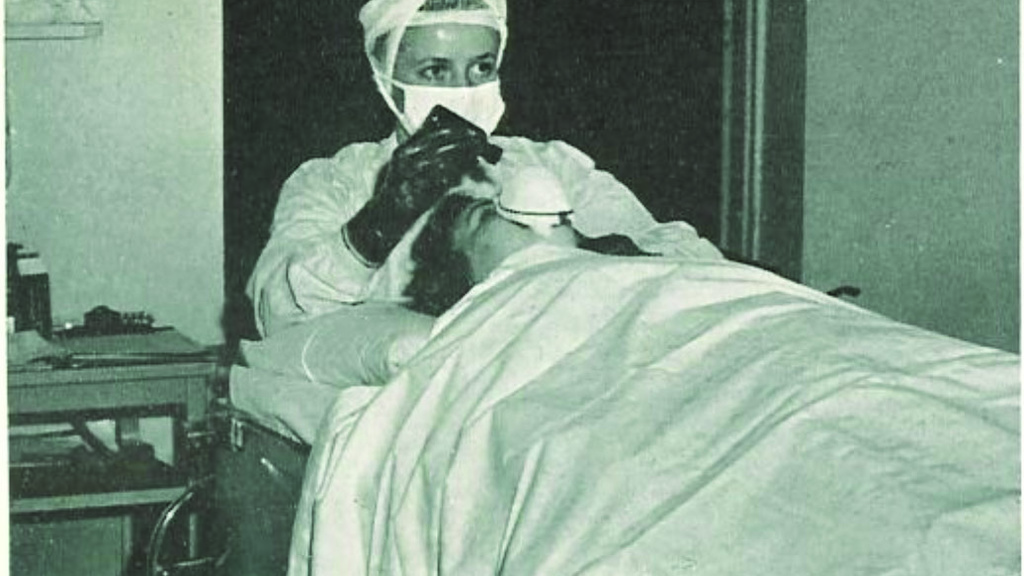
1961
The change to a four-year BSN curriculum is approved by the Board of Regents, ending student work obligations at the hospital.
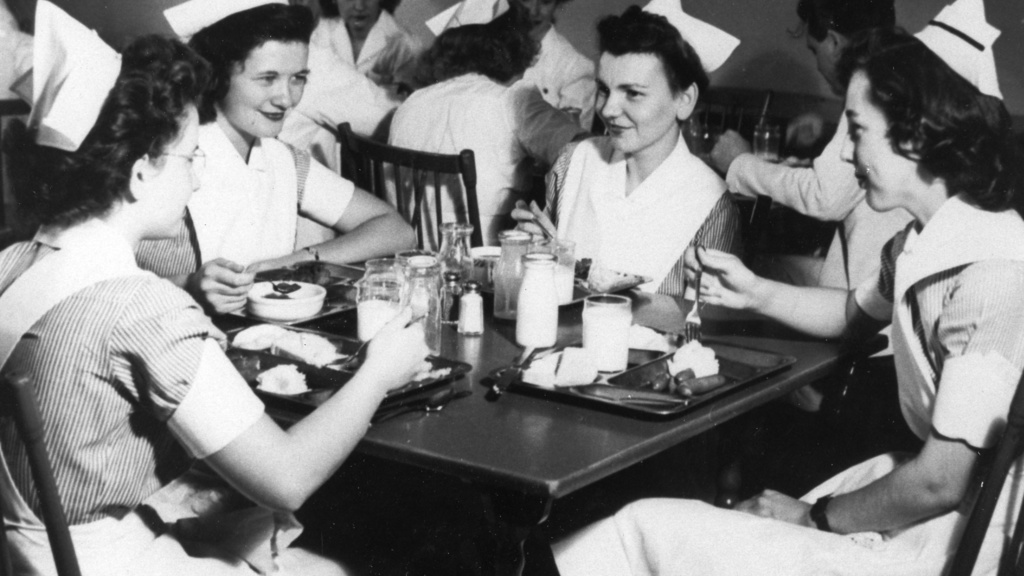
1964
Last year undergraduate nursing students live in Westlawn.
1965–1970
Seven federal grants obtained by faculty to expand the undergraduate and graduate programs and to initiate research projects.
1969
Construction begins on the new College of Nursing building.
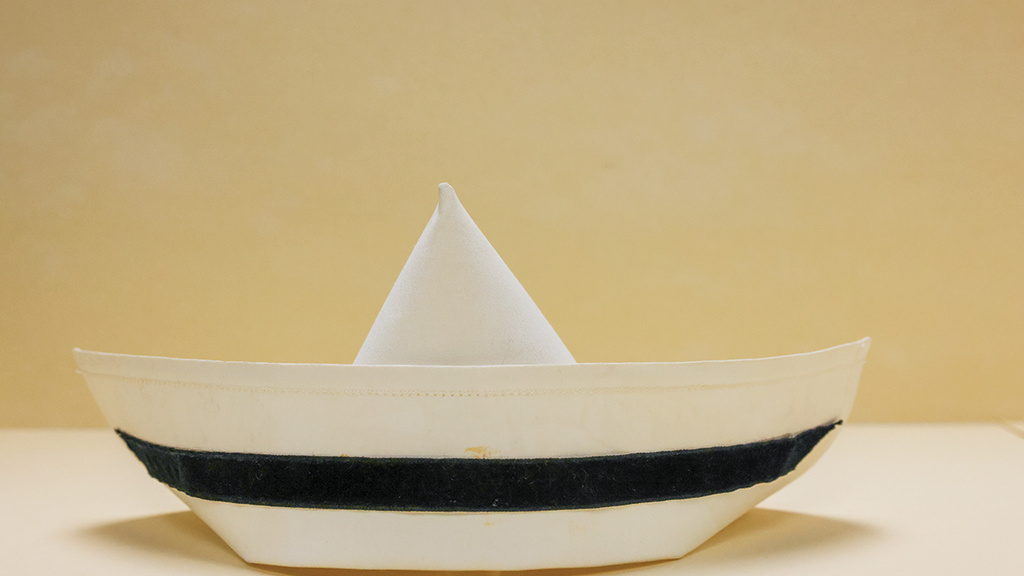
1971
The traditional capping ceremony honoring sophomores as they begin clinical experience is renamed the Recognition Ceremony, to accommodate male nursing students, who were increasing in number, and do not wear caps.
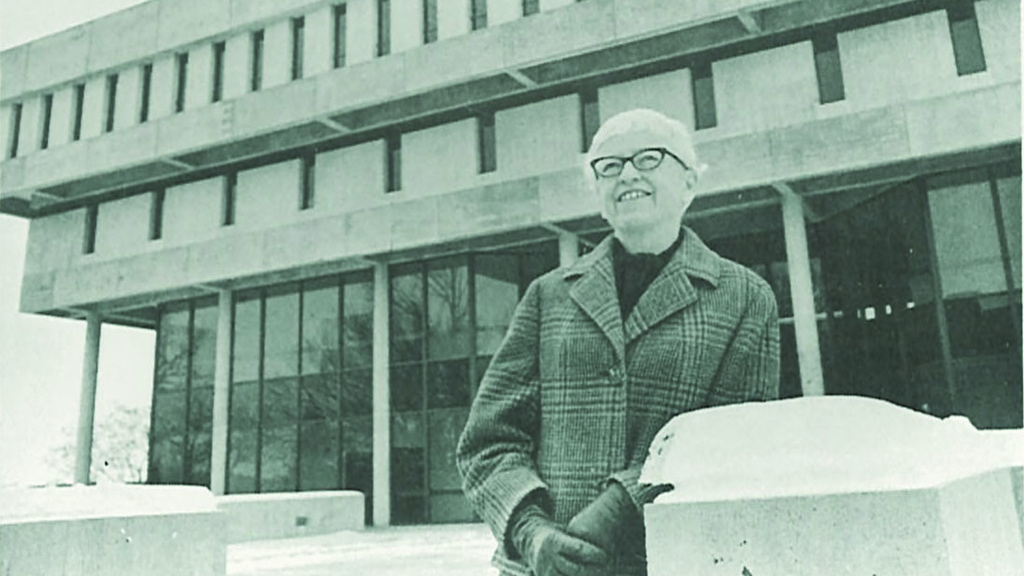
1971
The new College of Nursing building is dedicated in December, one of the largest accomplishments of Dean Dustan’s time at the college.
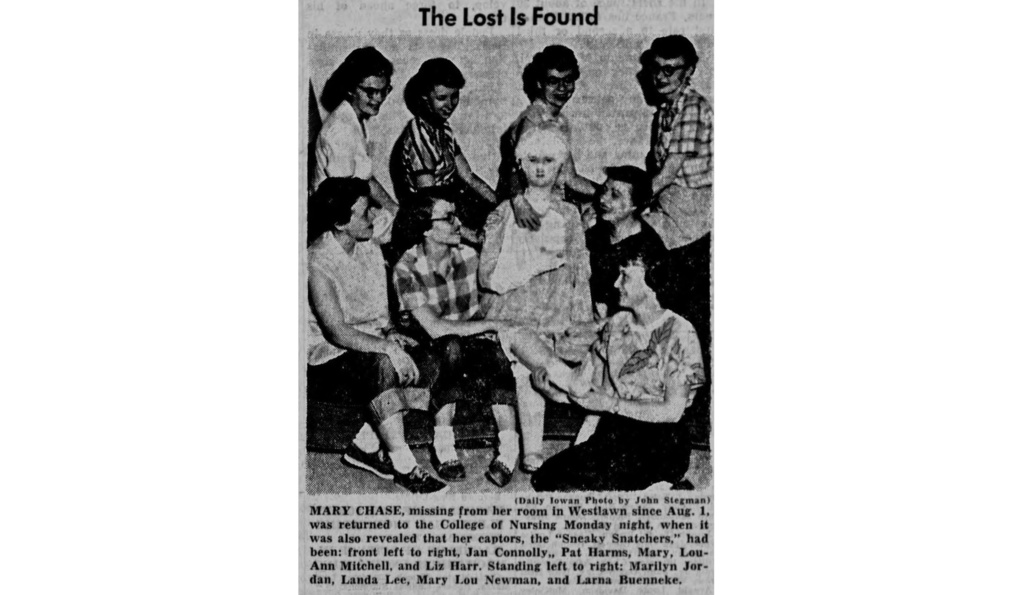
Aug. 10, 1955—A kidnapping gone awry During their senior year, eight nursing students dubbed the “Sneaky Snatchers,” pulled a prank on the nursing faculty by kidnapping Mary, a demonstration mannequin. The story took a turn when a group of physical therapy students captured Mary from the closet where she’d been “observing strict closet floor rest”. She was held hostage until the nursing students paid a beer ransom, after which they returned Mary to the college, “safe, but unsound.” - The Daily Iowan, Aug. 10, 1955
